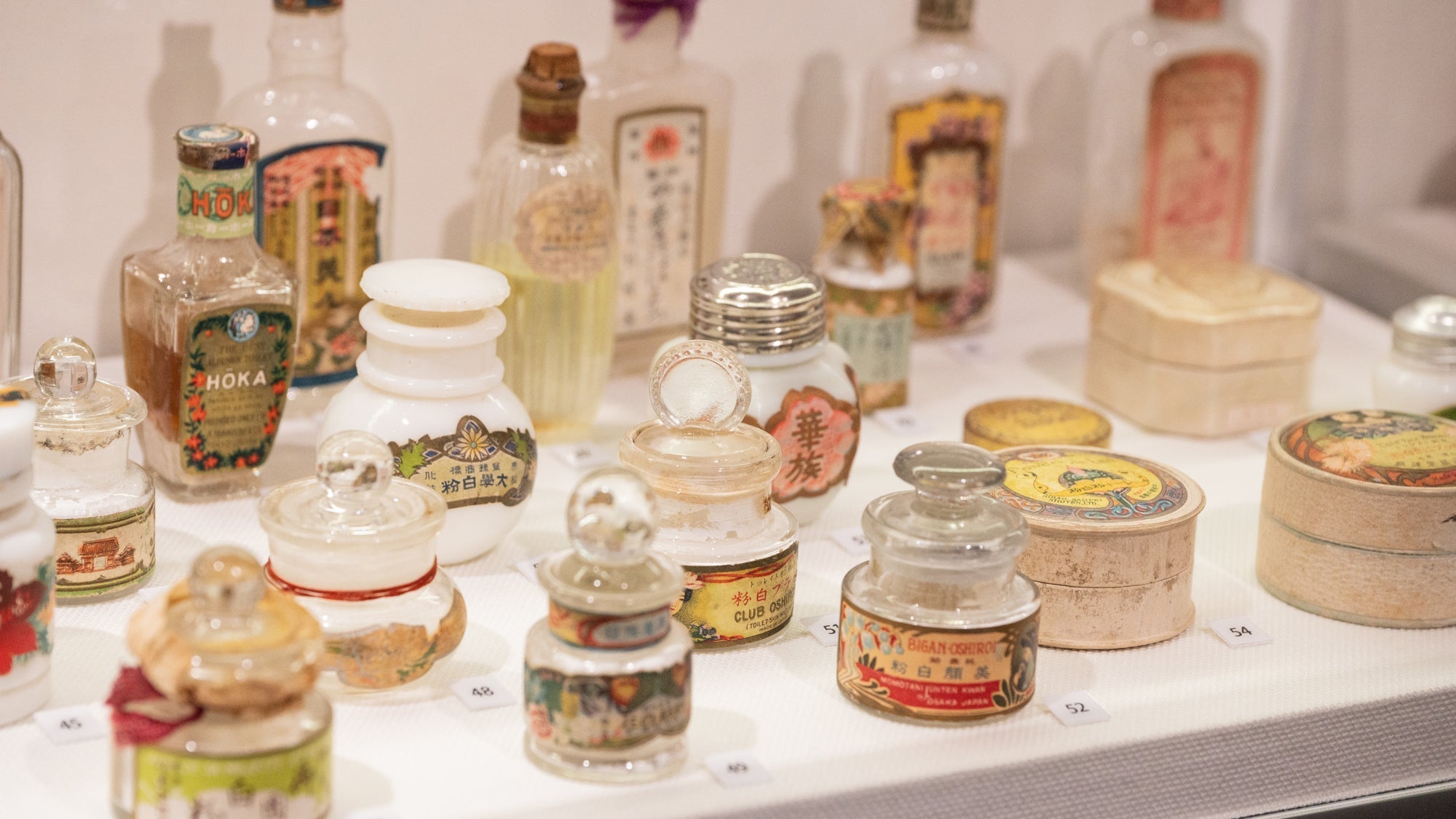
Beauty Secrets of Ume and Sakura: Discover at Japanese Cosmetic Museum
Written by Team MUSUBI
Spring in Japan begins from February 4th, Risshun (the first day of spring according to the lunar calendar), and gradually, flowers representing spring start to bloom. Plum and cherry blossoms are synonymous with spring in Japan, attracting crowds for hanami "flower viewing" across the country.
This time, the MUSUBI team visited the Beni Museum, where exhibitions related to plum and cherry blossoms are being held. This museum is operated by the "Isehan Honten", the last remaining beni shop dating back to 1825. Beni refers to the red pigment extracted from safflower, used in paints, dyes, cosmetics, and as a food coloring. We explore how these two motifs relate to the Japanese sensibility and uncover their secrets.
table of contents
Isehan Honten Beni Museum

Special Exhibition "Plum and Cherry Blossoms"
According to the explanation, plum was introduced to Japan from China around 720 CE during the Nara period, meanwhile, cherry blossoms have been native to Japan since ancient times. Both have been used as metaphors for beauty in Japan, evident from their popularity in cosmetic tools and as themes in waka poetry.

Plum was used in cosmetics mixed with fragrances, such as toothpaste and hair oil. For example, toothpaste called Baika-san contained red colored plum blossoms as an ingredient. This inclusion was not for flavoring purposes, but rather for their fragrance. This practice reflects the deep appreciation people at the time had for the scent of plum blossoms. Moreover, white plum was depicted on the package of white powder (used as face powder) as its white shade was highly praised at that time.


"I have loved in vain, and now my beauty fades like these cherry blossoms paling in the long rains of spring that I gaze upon alone."
- Kokin Wakashu, Spring 113 (Translated by Peter MacMillan)
Here, "flowers" represent cherry blossoms. Komachi often used cherry blossoms as a theme in her poetry, linking her closely with them. This influence likely contributed to the popularity of cherry blossoms.

Both flowers are beautiful, but there were distinct trends in each era. Both plum and cherry blossoms were cherished until the Edo period. With the introduction of Western culture in the Meiji era (1868 CE - 1912 CE), fragrant flowers like violets and lilies began to be used as cosmetics, gradually phasing out plum. Meanwhile, cherry blossoms gained renewed popularity in the late Edo period, used on cosmetics labels.

Permanent Exhibition
The exhibition starts with the history of beni. Safflower came to Japan via the Silk Road, grown in Yamagata Prefecture as Mogami beni flower. Several steps are involved in making beni, unchanged from the Edo period, starting with picking safflower petals and processing them into beni mochi before being wholesaled to beni shops and dyers.

In Japan, red has historically been considered a color to ward off evil, appearing in rituals at life's milestones. Beni embodies people's prayers and celebrations, rooted in a culture of faith and protection.
Beni Experience
Komachi Beni is applied to the lips with a beni brush, mixed with water. After soaking the brush in water and shaking off the excess, beni is gradually dissolved from the edge of the container with the brush. The moment beni touches water and dissolves into red is fascinating.

When Tominaga-san painted the beni, it turned vermilion, while mine resulted in a vivid rose pink. Seeing myself with beni in the mirror was surprising, feeling like discovering a new self, an interesting experience that added to my future lipstick choices.



Beni Museum
K's Minami Aoyama Building 1F, 6-6-20 Minami Aoyama, Minato-ku, Tokyo

Plum Viewing at Koishikawa Korakuen
Koishikawa Korakuen, established in 1629 during the early Edo period by Tokugawa Yorifusa of the Mito Tokugawa family, is the city's oldest garden, completed during the era of the second Mito Tokugawa Lord, Mitsukuni. The garden features a "strolling pond garden" with a central pond, incorporating Chinese scenic names and landscapes, skillfully expressing various sceneries such as lakes, mountains, rivers, and fields using the terrain's natural undulations.




Koishikawa Korakuen
1-6-6 Koraku, Bunkyo-ku, Tokyo

The Isehan Honten Beni Museum is a place to learn about beni. Viewing Japanese culture through cosmetics offers a different perspective. Although lipstick is commonly applied with a stick today, the experience of using beni leaves an unforgettable impression.
For those interested in makeup or traditional Japanese culture, it's a captivating place where time flies. Going outside to see plums and cherry blossoms is good, but seeking spring-related art exhibitions in Tokyo is also a great idea. Aoyama, home to the Beni Museum, Nezu Museum, and the famous wagashi shop Toraya, offers plenty of opportunities to enjoy Japanese culture with all five senses.







Leave a comment
This site is protected by hCaptcha and the hCaptcha Privacy Policy and Terms of Service apply.